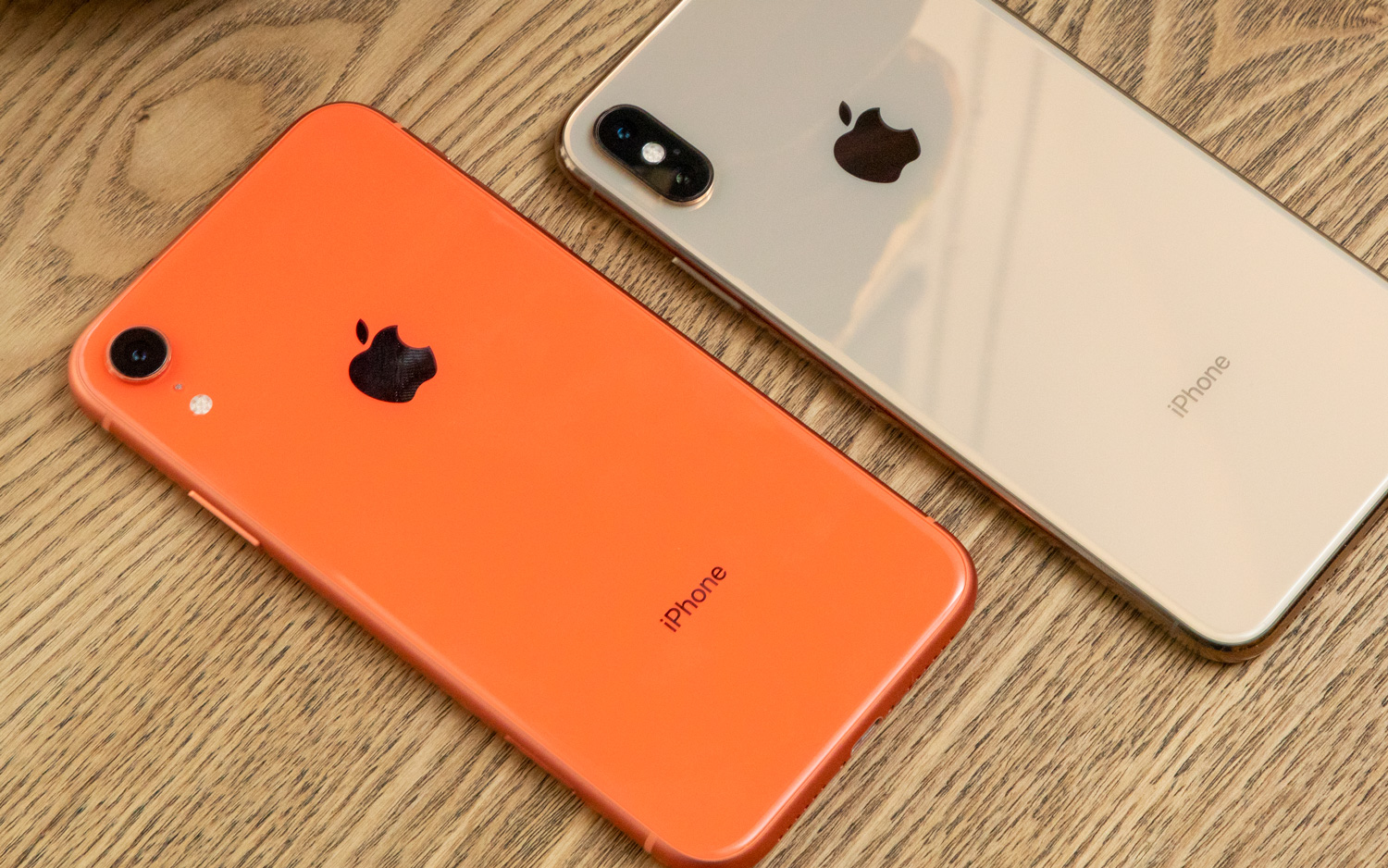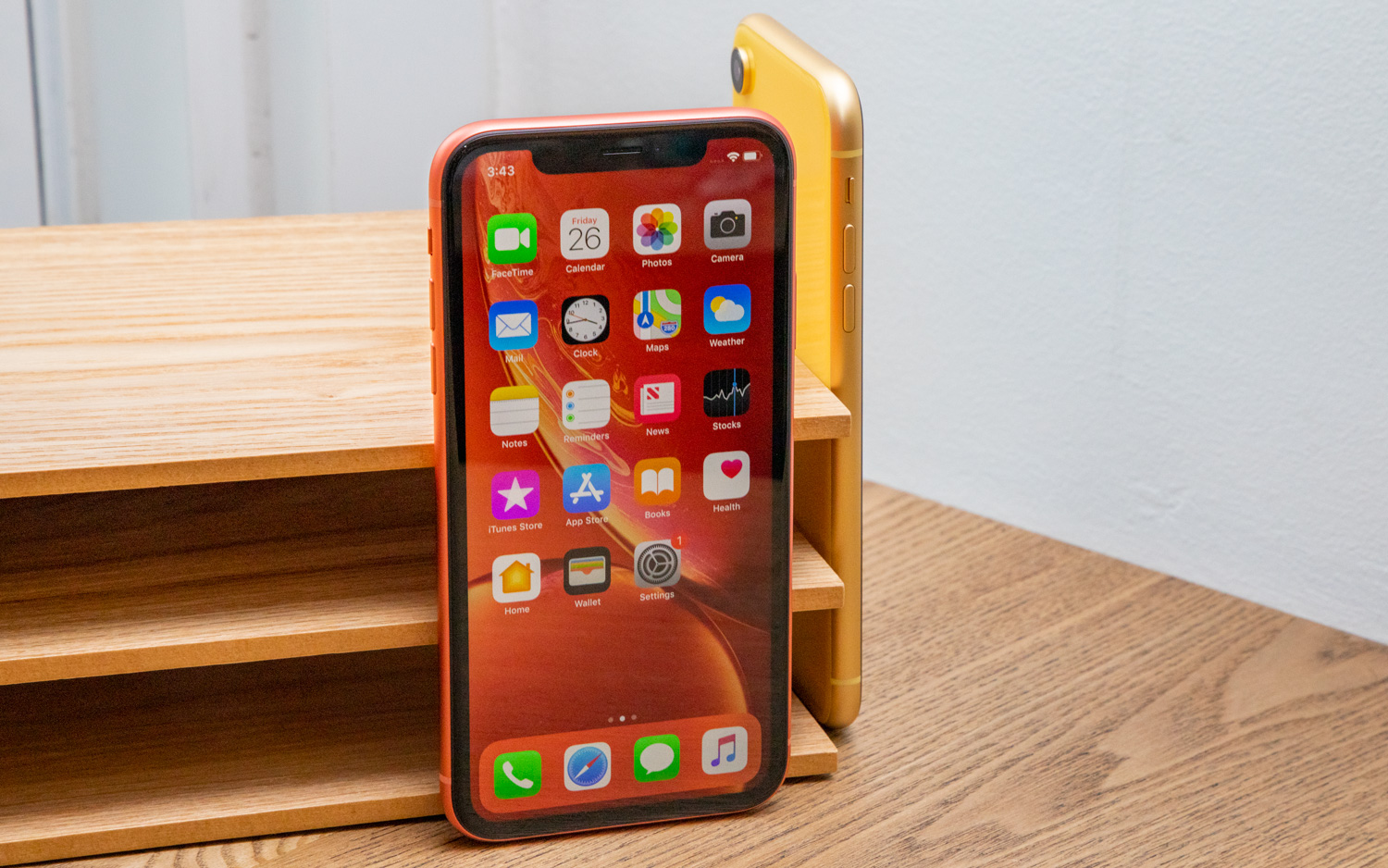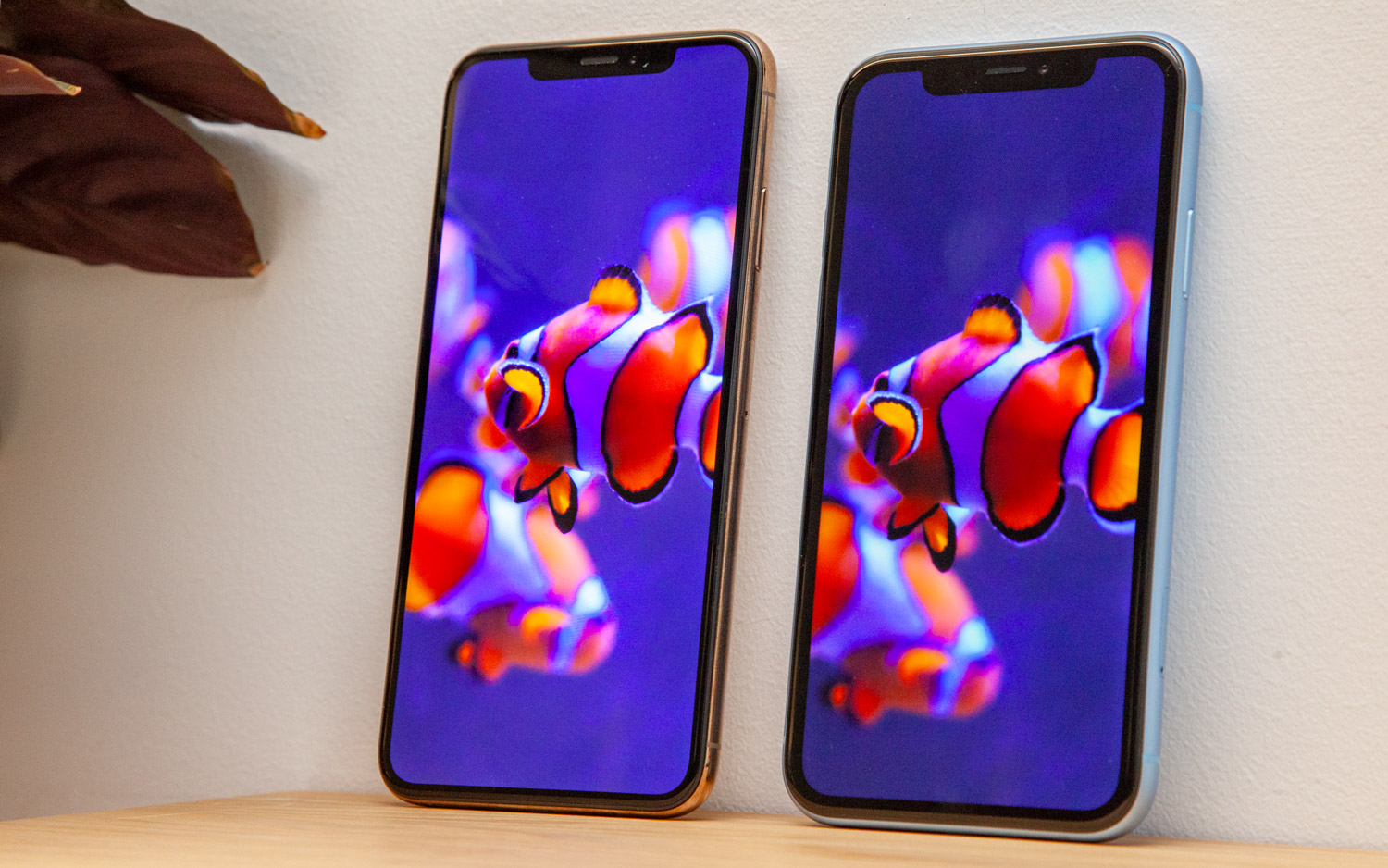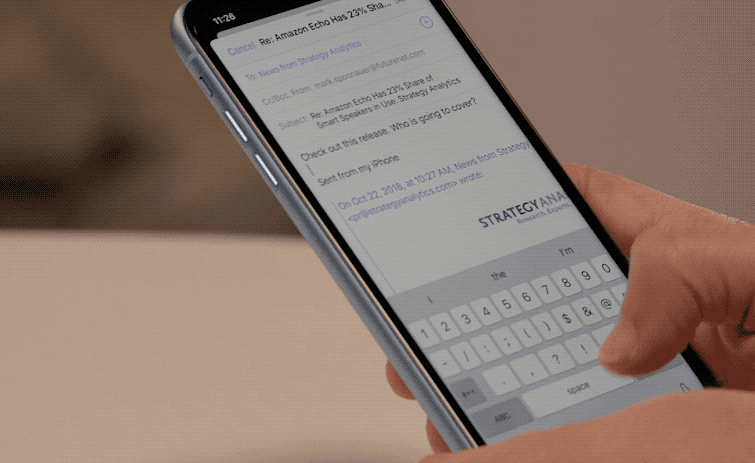Buying the iPhone XR? Here Are 5 Things You're Giving Up
The iPhone XR costs $250 less than the iPhone XS, while featuring the same processor and better battery life. But you'll have to give up some features.

Now that the iPhone XR has arrived in stores, a clear consensus seems to have emerged — for most people, this is the new iPhone to get.

After all, the XR runs on the same powerful A12 Bionic processor found in the iPhone XS and XS Max, and many of the same improvements that make the XS's cameras stand out have also found their way to the iPhone XR's lone rear shooter. It also lasts longer than any iPhone we've ever put through our battery test. You're getting all this for $749 — $250 less than what you'd pay for the iPhone XS. What's not to like?
We agree that the iPhone XR is hard to beat. But that $250 price difference does come with some trade-offs, and you need to decide if they really matter to you before you buy. Here's a breakdown of what you're giving up if you opt for the iPhone XR and its lower price tag.
LCD screen instead of OLED
Probably the starkest difference between the iPhone XR and the iPhone XS boils down to the display. To keep costs down on the XR, Apple opted for an LCD panel instead of the OLED screen it's used on all other iPHone X models.
The result is the iPhone XR simply can't show the vibrant colors and deeper blacks that an OLED phone is capable of. While the iPhone XR's display was able to show 123.4 percent of the sRGB color gamut in our testing, that's well behind the results we've seen from OLED-based phones. The Note 9, for example, posts an sRGB score of 224 percent.

More significant, the iPhone XR's viewing angles just aren't as generous as they are with other phones like the iPhone XS. When we stacked Apple's two phones next to each other with the aquarium screensaver enabled, the OLED-based iPhone had more vibrant colors, while blacks looked kind of gray on the LCD-based iPhone XR. The picture on Apple's less- expensive phone wasn't as vivid when viewed from an angle the way it was on the iPhone XS.
The resolution also isn't as sharp on the iPhone XR's 6.1-inch display as it is on the 5.8-inch iPhone XS. The XR lists a resolution of 1792 x 828 to the iPhone XS's 2436 x 1125 screen.
Sign up to get the BEST of Tom's Guide direct to your inbox.
Get instant access to breaking news, the hottest reviews, great deals and helpful tips.
Does It Matter? If you're upgrading to the XR from any iPhone other than the iPhone X, probably not. The iPhone X, XS and XS Max are the only Apple phones to use an OLED panel; all other phones go with LCD. So you're not sacrificing much by opting for the iPhone XR. Android users migrating over from an OLED-based phone may want to think twice about the iPhone XR, though.
MORE: Best iPhone XR Deals
Just one rear camera
The iPhone XS and XS Max both have a pair of rear shooters, something that's been pretty standard on Apple's priciest phones since the iPhone 7 Plus debuted in 2016. Since the iPhone XR is not among Apple's priciest phones, though, it skips that second lens for a lone 12-megapixel camera.

The good news is that a lot of the camera improvements Apple introduced with the iPhone XS and XS Max are also along for the ride with the iPhone XR. That includes Smart HDR, which means you can expect very detailed shots, even in shadows. And the single rear camera is capable of capturing Portrait mode shots that add an artistic blur — though with a couple limitations.
For one, you can only use the iPhone XR's Portrait mode to capture shots of people; try anything else, and you'll get a notification that the camera is waiting for people to enter the frame. What's more, Portrait shots taken by the XR look more zoomed out than what they do if you capture them with an iPhone XS or XS Max.
Speaking of zooms, that's something else affected by the lack of a second camera lens on the iPhone XR. You won't have a 2X optical zoom the way you would on Apple's dual-lens phones. Digital zoom is fine on the XR, but your zoomed-in shots will lack some of the finer details and contrast you'd get from true optical zoom.
Does It Matter? If you're serious about mobile photography, where you rely on your smartphone to capture photos either as a serious hobby or as a profession, you're giving up some notable features by going with just a single lens on the iPhone. For more casual photographers, who just want a phone capable of producing some pretty well-composed shots, the iPhone XR should fit the bill.
MORE: 6 Reasons You Should Skip the iPhone XS for iPhone XR
Not as durable
The iPhone XR has an IP67 water-resistance rating, meaning you can drop it in up to 3 feet of water for 30 minutes without suffering any ill effects. That's good, though the iPhone XS and XS Max are a little more durable with their IP68 ratings — they're good for around 5 feet of water for 30 minutes.
More important, the back of the iPhone XR isn't as tough as the material Apple used in the XS and XS Max, though at least all those phones use the same durable glass in the front. We won't know just how prone the XR is to cracking until we test it, but logic dictates that the XS would be more likely to emerge unscathed from an unexpected drop. We'd suggest you pick up a iPhone XR case at any rate.
Does It Matter? If you plan on bringing your iPhone poolside, the XS or XS Max is probably the better bet for avoiding aquatic heartbreak. For all other durability concerns, a good case is likely to give your iPhone XR the protection it needs — just get one that still lets you show off your new phone's pop of color.
MORE: iPhone XS Drop Test: Watch It Survive an 11-Foot Drop On Concrete
No 3D Touch
Probably as a way to keep costs down, Apple dropped 3D Touch from the iPhone XR. That's the feature where a hard press of an app icon brings up shortcuts, or pressing a link or photo gives you a preview.

Instead, the XR features something called Haptic Touch. A long press can do things like launch the camera from the lock screen or control the cursor when you're typing. But getting link previews or shortcuts popping up from app icons isn't something you'll be able to do on the XR.
Does It Matter? If you're upgrading from an iPhone that had 3D Touch (basically an iPhone 6s or later) and you made extensive use of that feature, it will take some time to adjust to Haptic Touch. If you're upgrading from an older phone or an iPhone SE, you can't really miss what you never had.
More limited storage options
All new iPhone models start with 64GB of onboard storage, the iPhone XR included. And you have the option of paying up for more on-board capacity, though your options are a little more extensive if you opt for an iPhone XS or XS Max.

Those two phones offer 512GB options, if you're willing to pay for them ($1,149 for the XS, and $1,349 for the XS Max). With the iPhone XR, you're limited to 256GB. On the bright side, the $899 256GB XR still costs less than the base model iPhone XS. But since iPhones don't have a microSD card slot to add storage later on, the capacity of the model you buy is what you're stuck with for the time you own your device, so choose wisely.
Does It Matter? If you store everything on your phone — and we mean everything — that 512GB of storage may come in handy. For most people, though, 256GB (and likely less, as the iPhone XR also has a 128GB option) is more than enough.
Bottom Line
Really, the biggest sacrifices you'll need to make with an iPhone XR are a less-vibrant screen than you'd get from an OLED-based iPhones and a less-extensive bag of photographic tricks than you might enjoy with a dual-lens model. If those features aren't all that important to you, by all means enjoy the equal processing power, longer battery life and lower price tag that the iPhone XR has to offer.
Credit: Tom's Guide
Philip Michaels is a Managing Editor at Tom's Guide. He's been covering personal technology since 1999 and was in the building when Steve Jobs showed off the iPhone for the first time. He's been evaluating smartphones since that first iPhone debuted in 2007, and he's been following phone carriers and smartphone plans since 2015. He has strong opinions about Apple, the Oakland Athletics, old movies and proper butchery techniques. Follow him at @PhilipMichaels.
-
makedon.tom I'm curious you didn't mention the lack of gigabyte LTE as opposed to advance LTE on the XR and the real world differences that presents.Reply -
labhrain I agree with makedon.tom. The Gigabit LTE wasn’t mention, yet it is actually the difference that has me on the fence. I love the color options of the XR, and the lower price is certainly appealing, given that is runs on the same great A12 Bionic chip. As Apple has done an excellent implementation of the LCD screen, I am fine with that trade-off for the price difference. I’m not a photographer. I take basic snapshots. As long as they don’t suck, I’m good with it. The XR is not going to give me sucky snapshots. The XR’s 2x2 MIMO vs the XS’s 4\00d74 MIMO, QAM and LAA, though? I live in an area with Gigabit LTE available. And this technology is rolling out more and more by carriers. This is the feature that just may push me to spend the extra for the XS.Reply -
shawndugout13 As long as they all get the bagel emoji with the new jizz added, and an apple sticker in the box the sheep are happy??Reply

